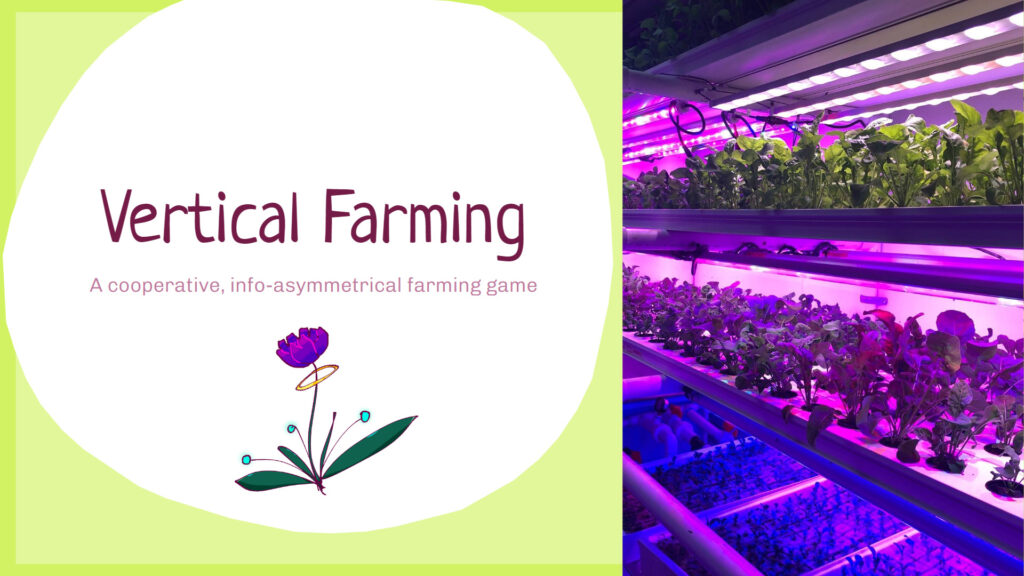
Roles: Systems Designer, Concept Artist, VFX Artist
Team: 5 people
Dev Time: 2 weeks
Vertical Farming is a cooperative alien plant farming game I pitched for helping humans and AI agents to learn to work together effectively. It is based on human-machine teaming (HMT) research and team science and is tested in conjunction with an AI development team at Georgia Tech. The core mechanic, cascading effects on a 3D grid, creates complex game states meant for AI agents to analyze and create courses of action (COA) with. The COA generated by the agents are then passed to a human player who is overseeing the whole vertical farm, forming a team dynamic that plays on the strengths of AI and humans.
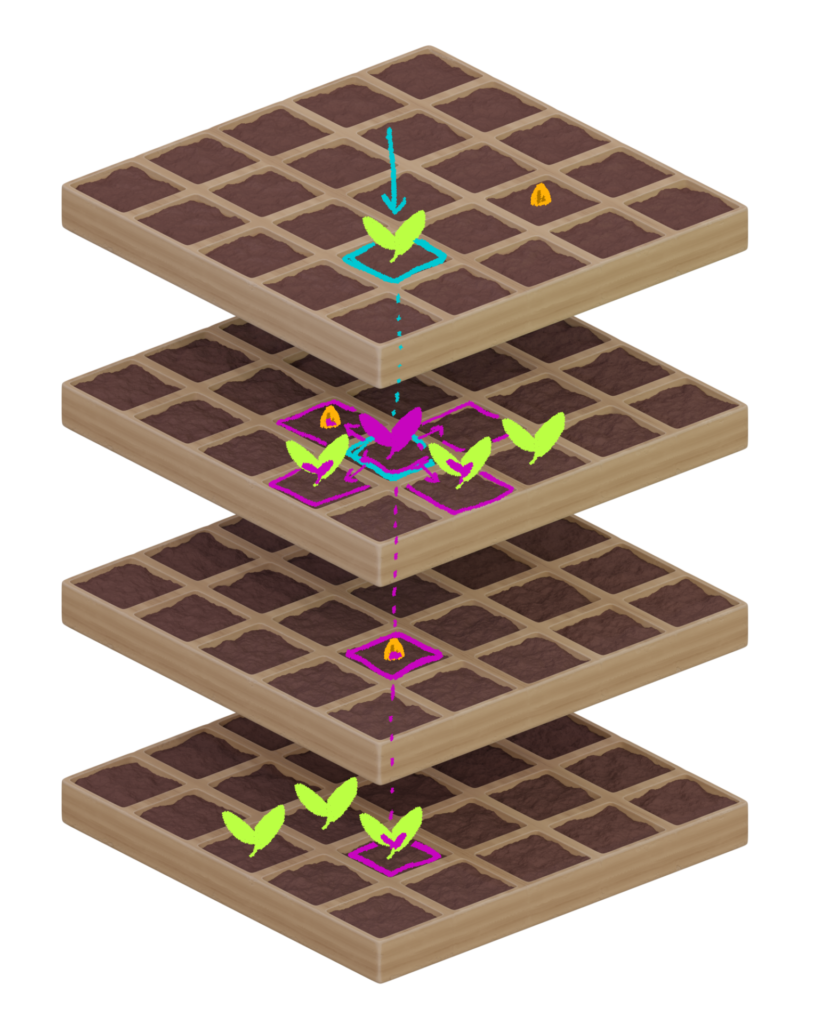
The core mechanic of status effects cascading throughout a 3D grid, causing increasingly chaotic interactions between effects, the soil in each grid cell of the vertical farm, and the plants living in each cell is one I devised to take advantage of the analytical powers of AI. The idea is that clean water will be poured down a column of cells, but as the water passes cells with status effects like poison, the effect will be picked up and transferred to the rest of the column below. When I pitched the mechanic to the AI researchers, they immediately became excited over the possibilities and related it to the concept of cellular automata, where the state of each cell in a grid over time is based on the past states of its surroundings. Cellular automata is a phenomenon occurring in much of nature, for example, the maturation of patterns on animal skin.
I designed each of the interactions between effects, plants, and grid cells, created systems for plant growth and water drainage through the vertical farm columns, defined intended commands and behavior for the AI agents, and drafted goals for each round of gameplay.
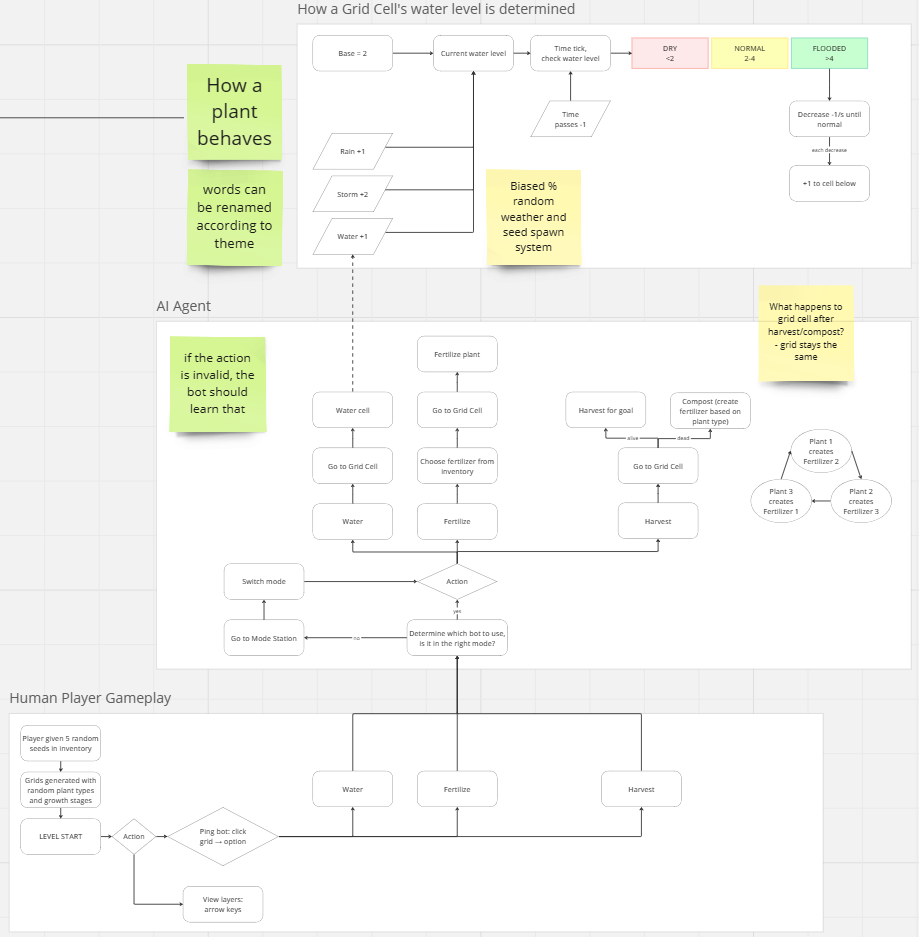
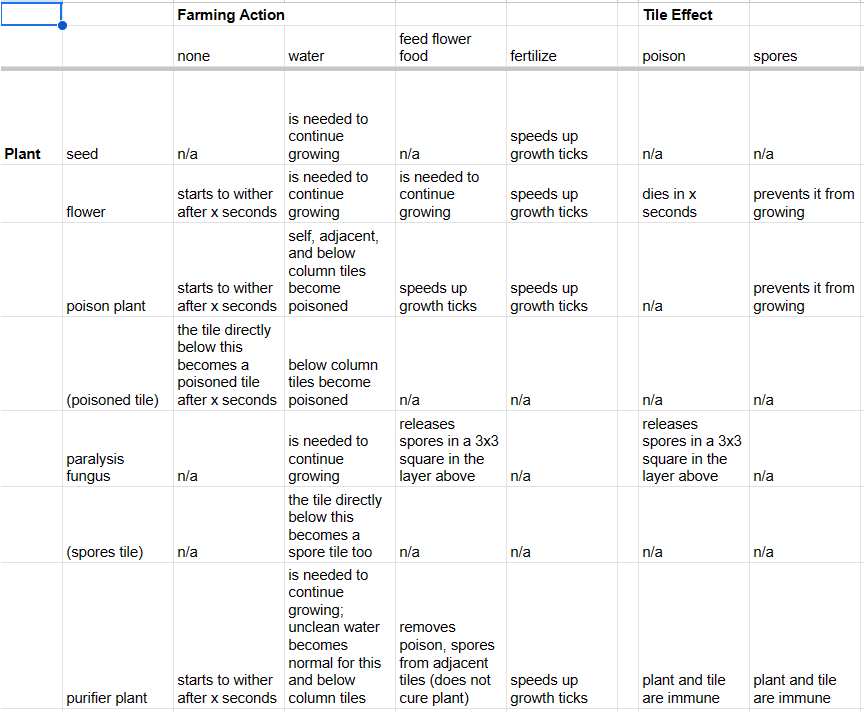
Earlier in the design process, asymmetrical information was an important part of encouraging teamwork between players. I designed a layered maze game, separate from the current prototype, where each player was only supposed to see one layer. It would then be mandatory to communicate instructions to others. I hope to see this manipulation of information used in future iterations of Vertical Farming.
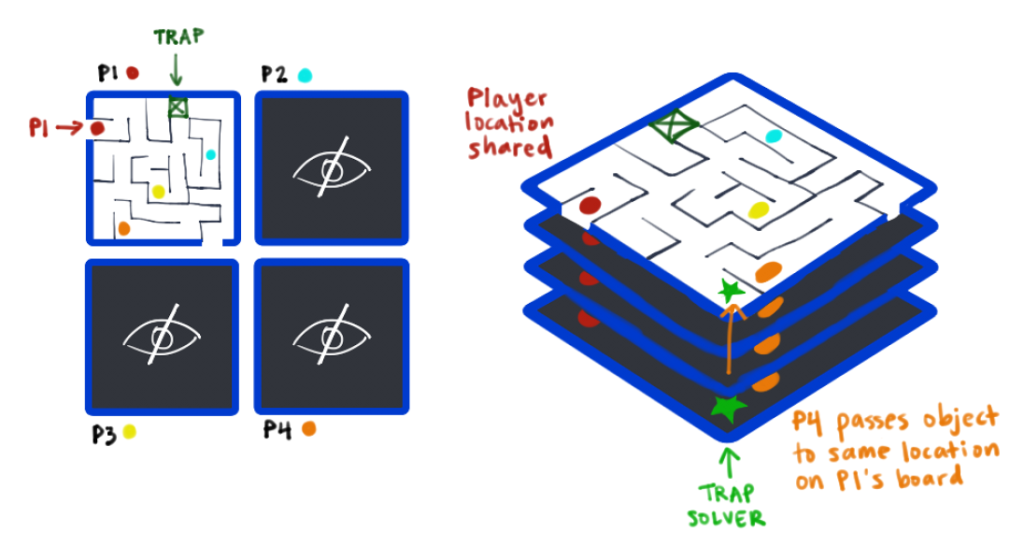
Embodiment of the human and AI players was a topic we discussed frequently. Embodiment refers to the form that the player will take in-game. In most games, a player takes control over a character or an overseer who does not show up on screen. In VR, a player’s embodiment is typically their VR hands or the tools in their hands. In Vertical Farming, the human player embodied as an overseer, while the AI agents can be either task bots that travel between grid cells to perform farming actions, large robot arms that perform actions over multiple columns, or bots that control the movement of individual grid cells. We plan on implementing this in future iterations.
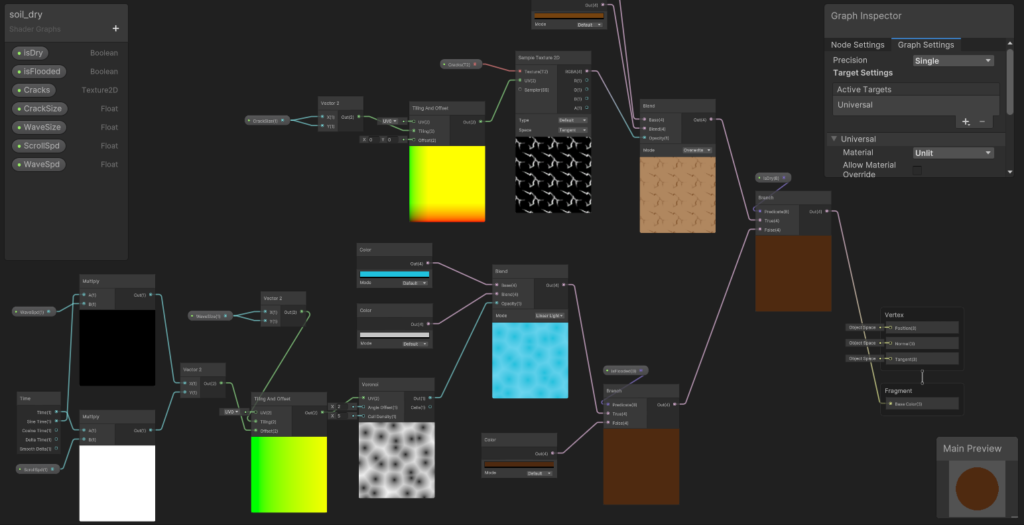
Last but not least, I learned how to use Unity’s Shader Graph during this project to visualize the grid cells in different soil states: dry, wet, and flooded.